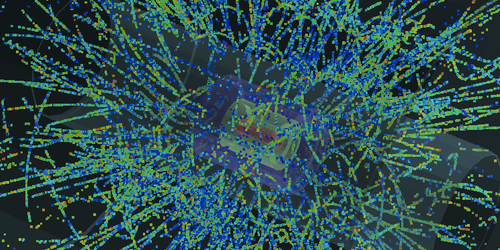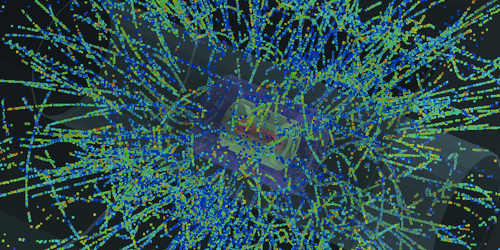Explaining Light Ion Production in High-Energy Collisions
Physicists smash ions together to create and study the soup of quark and gluons thought to have filled the Universe milliseconds after the big bang. Experimental observations show that these collisions produce light nuclei such as deuterons, tritons, and helium. However, scientists disagree on the theoretical explanation for this production. Some liken seeing these nuclei to finding “snowballs in hell,” as the high temperatures of the fireballs emerging from the collisions should “melt” the nuclei into their subatomic components, yet they appear not to. Now, Dmytro Oliinychenko of Lawrence Berkeley National Laboratory, California, and colleagues suggest a microscopic mechanism that might explain why the nuclei survive.
A recent proposal provided a qualitative explanation for the observation of these nuclei. The proposal suggested that the light nuclei that form in the fireball are continuously destroyed by the high temperatures and repeatedly recreated from flying protons and neutrons as the fireball cools down. But the microscopic mechanisms behind this scenario remained unclear.
Oliinychenko and his colleagues set out to find this mechanism by analyzing a set of reactions that could form deuterons. They pinpointed one possible reaction in which protons and neutrons form deuterons in the presence of pions—quark-antiquark pairs—which act as catalysts for the reaction. The team simulated conditions similar to those of a recent CERN experiment, carried out by the ALICE Collaboration, that precisely characterized the light nuclei produced by collisions. The calculated yield and energy spectra of deuterons were consistent with ALICE’s observations. If Oliinychenko and colleagues’ idea is correct, it should also explain the formation of other observed nuclei, such as tritons, a possibility that the authors plan to check in upcoming calculations.
This research is published in Physical Review C.
–Matteo Rini
Matteo Rini is the Deputy Editor of Physics.





